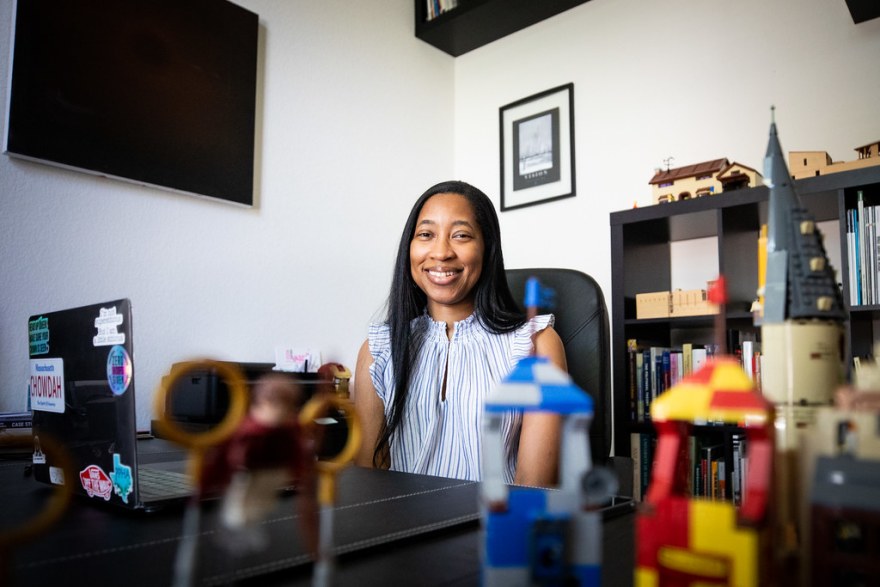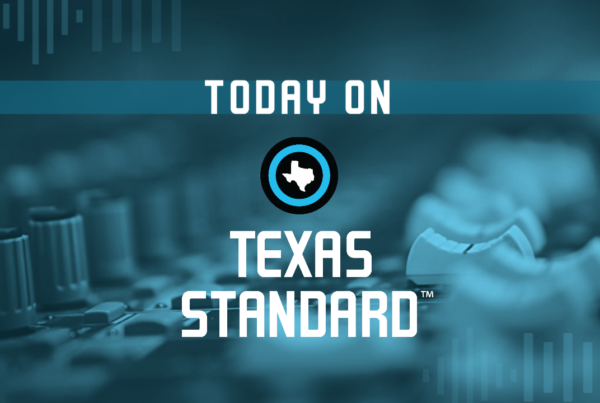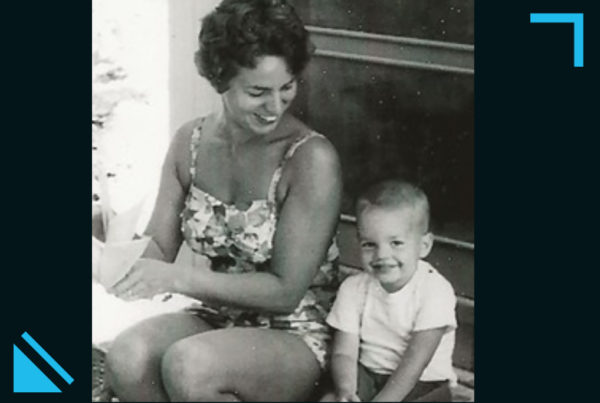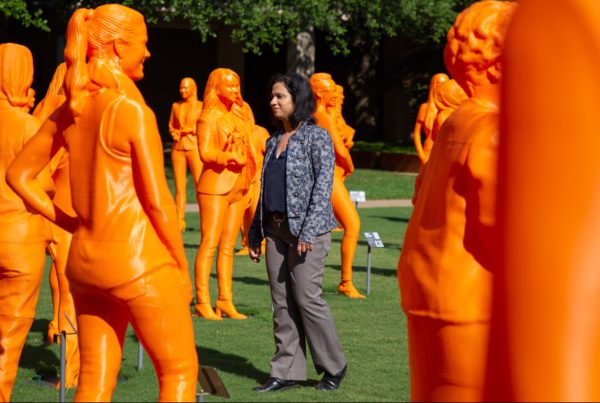From KUT:
Whenever Lexi Losch is deep in her work, there’s background noise — specifically, white noise from a machine she puts outside her bedroom.
“My kiddos have come to learn that when they hear Mommy’s sound machine click on, Mommy’s at work,” Losch said.
It’s a tool she’s used in the last year to create some separation between her three children and her work as a therapist. Losch specializes in reproductive mental health, meaning she works with people going through depression, anxiety and trauma surrounding fertility, pregnancy and pregnancy loss. Not many clinicians focus on these issues, she said.
It took a while for Losch to get used to doing sessions from home with three elementary-aged kids. And as the pandemic wore on, the challenges only got worse. Her job started to feel heavier and harder to “shed” at the end of the day.
“I think so many of us are experiencing burnout and it comes in waves,” she said. “And sometimes I feel OK. And other times, you know, I need a day or two off.”
Anxiety and depression rates have soared during the pandemic, leading many people to seek out therapy. Central Texas therapists saw demand skyrocket in 2020 and 2021. And those extra clients — combined with stress from the pandemic, protests for racial justice and a divisive presidential election — took a toll on their mental health.
‘All Of Us Have Wait Lists’
When the pandemic started in March 2020, Losch and other therapists started practicing from home, seeing clients through video calls and over the phone. But they didn’t see an uptick in new clients until the summer. The reality of how long the pandemic would last, paired with the murder of George Floyd and subsequent protests, sent many people looking for therapy.
Losch went from seeing 15 to 20 clients per week to sometimes seeing as many as 30.
“We haven’t wanted to turn people down, but now all of us have wait lists, all of us are working overtime,” she said.
Initially, Losch was able to accommodate new clients. Without a commute from Pflugerville into Austin, she had more time for sessions. And it was hard for her to see someone struggling with a perinatal issue and think about turning them away.
“It’s like, well, I don’t have availability and neither does this place, and this place has a six-month waiting list, and that therapist is too expensive,” Losch said. “You run that tally in your head and you’re like, ‘Wow, maybe I can see them every other week, and I just won’t eat lunch those days.’”
She says the extra clients means spending more time submerged in other people’s traumas, and some days it’s hard to separate herself.
Addressing Trauma
Louis Laves-Webb has been a therapist for 20 years. He says the last year has been the most challenging of his career: His workload increased and the emotional toll has led to burnout.
“A lot of the things that are being discussed are not easy things to always hear — people’s difficult traumas or their anxieties or their depression or pretty horrific stories about abuse and neglect,” Laves-Webb said. “To hear that in the context of a home where you try to create a safe environment, I think felt pretty jarring at times and took some adjustment.”
Therapists are trained to not get emotionally invested in their clients’ issues. It’s always a challenge, he said, but it felt impossible at some points over the past year, particularly after his son contracted COVID. It was hard to stay neutral when clients were sharing their anxieties about the virus.
“I think I definitely had empathic misses kind of throughout the year, and I can honestly say I probably wasn’t the very best,” Laves-Webb said. “I think there were moments when I probably showed up in really significant ways, but I definitely had moments that I missed.”
When George Floyd was killed and protests broke out across the country, Losch said, it was all her clients talked about for weeks. She struggled to be present when she, too, was feeling pain.
“I would tell some of my clients, ‘First and foremost, I identify as a Black female,’” she said. “’Forget the job, I’m a Black woman and I’m also hurting, and I don’t know that I have answers.’ And for many of my Black clients, we just sit and hold space.”
Losch started to set boundaries with non-Black clients who expressed feelings of helplessness and guilt. She sent them resources, but also offered something nontraditional.
“I would just say, ‘Do you want my response as a Black woman or do you want my response as a therapist?’ Many times, they were like, ‘I care that you’re my therapist, but right now I don’t care. I want you to real talk to me,’” she said. “I held that space for them and that was difficult. But I also recognize that even though it’s a different kind of helplessness, they’re also feeling helpless.”
Losch is new to the therapy profession; she got fully licensed in the middle of 2020. None of what she experienced over the past year has turned her away from the job. Instead, it taught her she needs to be strict with setting boundaries around how many clients to accept and how to prioritize self-care.
While the year took a huge toll on him, Laves-Webb said he recognizes that therapists were frontline workers.
“It was in the shadows,” he said. “It wasn’t discussed on the news; it wasn’t seen out loud. But in people’s dreams and in their experiences and in the places that they didn’t share with anybody else, they shared all that with us. That’s what we did, and that was our front line. It was scary, it was intense, but it was also very, very powerful and a real privilege and an honor.”















